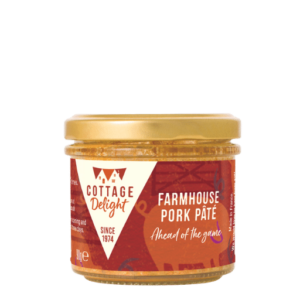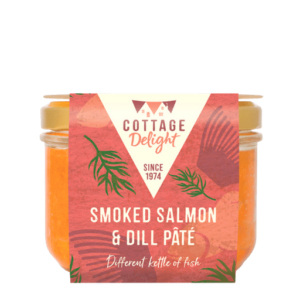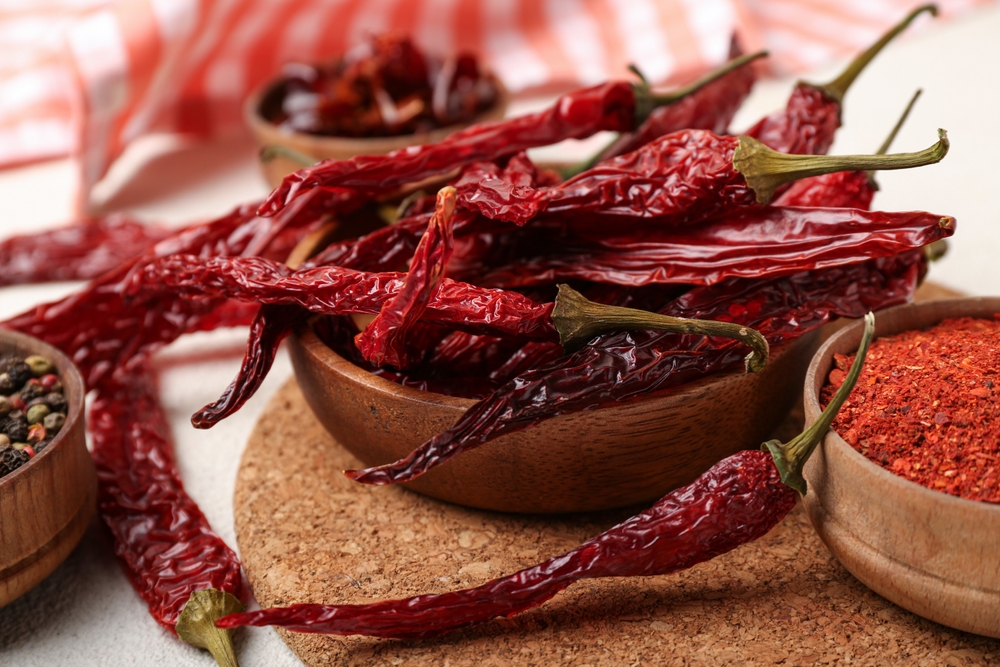What is pâté?



An essential requirement to any cheese board, a delicious accompaniment to cheese and crackers or a perfect dinner starter. Pâté has a very rich history, so let’s get this pâté started and understand all about this delicious dish!
What is pâté?
Plain and simple, pâté is a mixture of seasoned ground meat, seafood, poultry or vegetables cooked down into a spreadable texture. Pâté is pronounced pah-tay which is simply French for ‘paste’. A restaurant staple and a particular Christmas favourite.
French chef Jean-Joseph Clause is credited with creating and popularising pâté de foie gras in 1779 (Foie gras is a specialty food product made with goose or duck liver). Chef Clause’s culinary genius was rewarded a gift of twenty pistols by King Louis XVI, and he obtained a patent for the dish in 1784. He went on to start his own company specialising in supplying pâté to the gentry.
What is pâté made of?
Cottage Delight pâtés are created using authentic artisan methods by our trusted French family producers at the foothills of the Larzac plateau. Our specially selected recipes are balanced beautifully for both texture and taste, offering you unique and flavoursome options.
Pâté is often made of pig meat, but wild game like snipe, partridge, venison or wild boar can be cooked into a pâté, as can farm-raised duck, rabbit or pheasant. Lean meats might require the addition of some pork fat to keep the pâté from drying out in the oven.
How is pâté made?
Our French partner has been creating pâtés for over 40 years with the French produce, some of which come from the Occitanie region.
Meats are sliced with a knife to respect the traditional methods and knowledge, passed on through four generations.
Depending on the recipes, the ingredients are browned in a large kettle and then added to a preparation in a mixer. Once this mixture is done, the products are packed in jars.
Once filled, they are cooked in an autoclave at a temperature necessary to ensure their conservation over time.
Once they leave the autoclave, the jars are ready to be enjoyed by you.
Types of pâté
Pâté and Terrine
Terrine is a dish that is made from ground meat, seafood, boiled eggs, vegetables, herbs and other seasonings that are layered in a ceramic, loaf-shaped mould.
While terrine is cooked in a loaf-shaped mould, pâté is simply a blend (fine or coarse) of ground meat, herbs, organs, vegetables, or seasonings. However, due to the similarity in the basic recipes, you may hear/use the terms interchangeably.
Here comes the essential part! The full list of many pâté types that you may not know about. They’re all delicious. Let’s explore more about them!
| Types of pâté | Ingredients | Texture/Taste |
| Pâté Chaud | Liver and meat, or only liver | At times, a terrine may be half-cooked, wrapped in a puff pastry and baked. This dish is called pâté en croute. |
| Pâté de Campagne | Cuts and trims of meat, garnishment (smoked ham, duck confit), truffles | More refined and ground than other types |
| Pâté en Croûte | Pork, veal, or poultry and some mushrooms or nuts | Flaky crust and soft filling |
| Pâté de Gibiers | Meat from farmed animals or wild game (pheasant, roe deer, wild boar, and quail) | Gamey taste with juicy filling |
| Pâté Grandmère | Bacon, pork liver, and boneless pork leg with basic spices, lard, shallots, eggs, soft Omerta, bread crumbs, and whole milk | Chunky, juicy texture |
| Pâté de Foie Gras | Made with the liver of a goose or duck that has been force-fed until reaching a fat content of over 50% | Spreadable and easy to top crackers and slices of bread |
| Pâté Lorraine | Pork and veal, sometimes rabbit and chicken, seasoned with wine, shallots, and fresh herbs (thyme, bay leaves, parsley) | Flaky pastry cover outside and flavorful filling inside |
| Pâté Forestière | Pork liver, pancetta, eggs, brandy, sherry, cream, mushrooms, truffle salt, and fresh herbs like parsley and thyme | Extremely earthy, forest-like flavour |
| Pâté Maison | Chicken liver and pork liver paste wrapped in bacon | Super creamy and velvety texture |
| Pâté Hénaff | Pork, ham, liver, stock, and different spices like sea salt | Unique and pleasant flavour |
| Pâté Vigneron | Sliced pork, basic spices, white wine, parsley, and onions | Tastes incredibly pleasant with nutmeg in pork |
| Mushroom Pâté | Dried or fresh mushrooms, garlic, rosemary, ricotta | Spreadable, tastes rich with an umami flavour |
How to eat pâté?
Want to know what goes well with pâté on toast? Toast is traditionally served with pate but why not elevate your offerings and serve on homemade challah bread or brioche? Beyond this, the pate accompaniment could well depend on the texture of the pate, we offer a variety of more coarser, country style pates and also smoother styles. For a coarser style pâté these are best served with tangier tastes such as gherkins or cornichons. For a smoother style pâté, opt for something sweeter such as fruity chutneys, or an onion marmalade. Both styles of pâté are suitable with all flavour chutneys, whatever your pâté preference we have a large selection of chutneys to match your taste.
Buttered toast is the obvious choice for your pâté. There is nothing that cannot be improved by the addition of butter. A grilled sourdough bread would be the ideal too, but any decent, thick-cut real white bread will suffice. Crusty, fresh baguette is perfect for starters and the go-to default for the French. One’s to avoid; Melba toast will be far too thin and brittle for a coarse pâté. Likewise with toasted pitta bread, the texture will be too doughy. Thin crackers may also be too dry and more suited to just classic cheese and chutney.
At this point you may be wondering how to eat pâté and how to serve it. pâté can be eaten at lunch, as an evening starter or a main component in a dinner party. Accompaniments for pâtés require little more than toast and a few refreshing celery sticks or radish slices. Let your guests serve themselves, or spread the pâté on the bread or toast in advance and arrange them on a platter. A second great accompaniment is gherkin, the perfect combination of crunchiness and tartness, which pairs very nicely with rich meaty pâtés. All types of chutneys are a suitable choice to serve with pâté, for a seasonal Christmas twist try Classic Cranberry Sauce too. Chutneys and pâté are a match made in heaven, we have a large selection of chutneys to suit your taste.
Originally, and most basically, a chutney is a bright relish made from fruits and spices, used as a condiment, naturally lending itself as a wonderful accompaniment to a variety of pâtés. The rich and flavourful aspects of both chutneys and pâtés work in harmony. Try spreading the pâté onto a sliced baguette, and topping with a spoonful of your favourite chutney.
Need some inspiration? Here are four perfect pairings to try at home:
Gamey, pungent, and aromatic, our Pheasant Pate has a classic British taste which is perfect for our English Country Cider Chutney, bursting with chunky vegetables and proper country cider.
- Duck Pâté with a fruity chutney such as Classic Apricot Chutney:
Duck meat goes really well with sweet and sour food pairings, perfectly complimenting fruity chutneys such as our distinctly sweet Apricot Chutney.
Our Real Ale Yorkshire Chutney is created with British Bramley apples and plump rhubarb with British real ale for a deliciously deep rich flavour. The rich flavours perfectly complement the pork and mustard within the Farmhouse pâté. This coarse-textured pâté is ideal served with warm crusty country-style bread.
Our Smoked Beetroot Chutney has a subtle smokiness and a hint of vinegar. It will make a great addition to your cheeseboard, pâté and is especially good with fish.
Common questions about pâté
- What is Brussels pâté? Produced in Belgium, Brussels pâté is a particular style of pâté made from smooth pork liver and pork pâté. This type of pâté would be defined as a smooth texture rather than coarse.
- Is pâté good for you? Adding pâté to your diet boosts your micronutrient intake, which offers some health benefits, but it also increases your intake of fat and cholesterol. Consume pâté in moderation as a treat, but don’t make it a daily part of your diet.
- Can you freeze liver pâté? Yes you can freeze liver pâté. Wrap the dishes well and freeze for up to 2 months. Defrost overnight in the fridge and remove from the fridge an hour (less if it’s very hot) before serving to take the chill off.
- How long does pâté last? Our pâté has a 3-4 year shelf life. Once opened, refrigerate and eat within 3 days.
- What to do with pâté? Slice them, spread them, share them – our pâté is the perfect party canape, a sensational starter, perfect for picnics, delicious on a charcuterie board or served alone with crusty breads.
- What is Ardennes pâté? A medium coarse pork liver pâté, made using the finest pork fat and liver. It is enriched with cream and seasoned with chopped thyme and dried spices.
- Is pâté always liver? No. Although pâté is traditionally made with liver, it can also be created with other parts of pork, venison, chicken, fish, duck and other game, and even created with vegetables on occasion.
- How to make chicken liver pâté?
Step One: Cleaning the Liver
Classic chicken liver is the perfect place for a rookie pâté maker to start. You can find these livers at any butchers, and they’re always relatively cheap, setting you back no more than a few pounds.
To achieve that silky mousse-like texture, cleaning the livers is not a step that can be bypassed. Using a sharp knife, you need to remove the connective tissue between the lobes of the liver. The lobes you’re trying to save are smooth and dark in colour while the connective tissue will be significantly lighter and lumpy in texture. They may even be streaked with fat, which will help you identify them easily.
Step Two: Cooking the Liver
Start by cooking your choice of ingredients in a pan. To further enhance the quality of your pâté do all this in a generous amount of butter. As it slowly melts, begin the seasoning process adding in a big pinch of sea salt, some fresh cracked black pepper, and your herb of choice. Some minced garlic, (two or three cloves ought to be enough), and some onion sliced thinly. As the butter finishes melting, the flavour of the garlic and onions will begin to meld together, making your kitchen smell incredible.
Once the onions have softened and turned translucent add in your cleaned lobes of liver along with a splash of wine and balsamic vinegar. Give them time to brown thoroughly developing those deep caramelised notes of flavour, about three minutes on each side ought to be perfect. We want to retain a small amount of pink in the centre, so don’t let the cooking process go too far. Turn off the heat and allow the whole thing to cool as the flavours intermingle and the liver begins to absorb the flavours of the wine, butter, and vinegar.
Step Three: Blitzing the Liver
Once the liver has had several moments to rest in the steaming liquid and while everything’s still warm, transfer the contents of the pan into a blender using a spatula to get all the juices in as well. These are full of flavour and shouldn’t be forgotten. Once it’s all in, blitz the entire thing until smooth, then transfer to a dish to chill.
Step Four: Chilling the Pâté
Pour the pâté into your ramekin or terrine. Once filled, spread a tea-towel onto your counter and bang the terrine gently but firmly onto the tea-towel to help the pâté settle down, and any air pockets work their way out of the dish. Cover tightly in plastic wrap, and chill. The longer you chill your pâté, the better it will taste. We prefer to let the entire thing rest overnight in the refrigerator, this gives the ingredients adequate time to meld and the flavour to develop.




PRODUCTS USED IN THIS BLOG
Find your new favourite pâté










